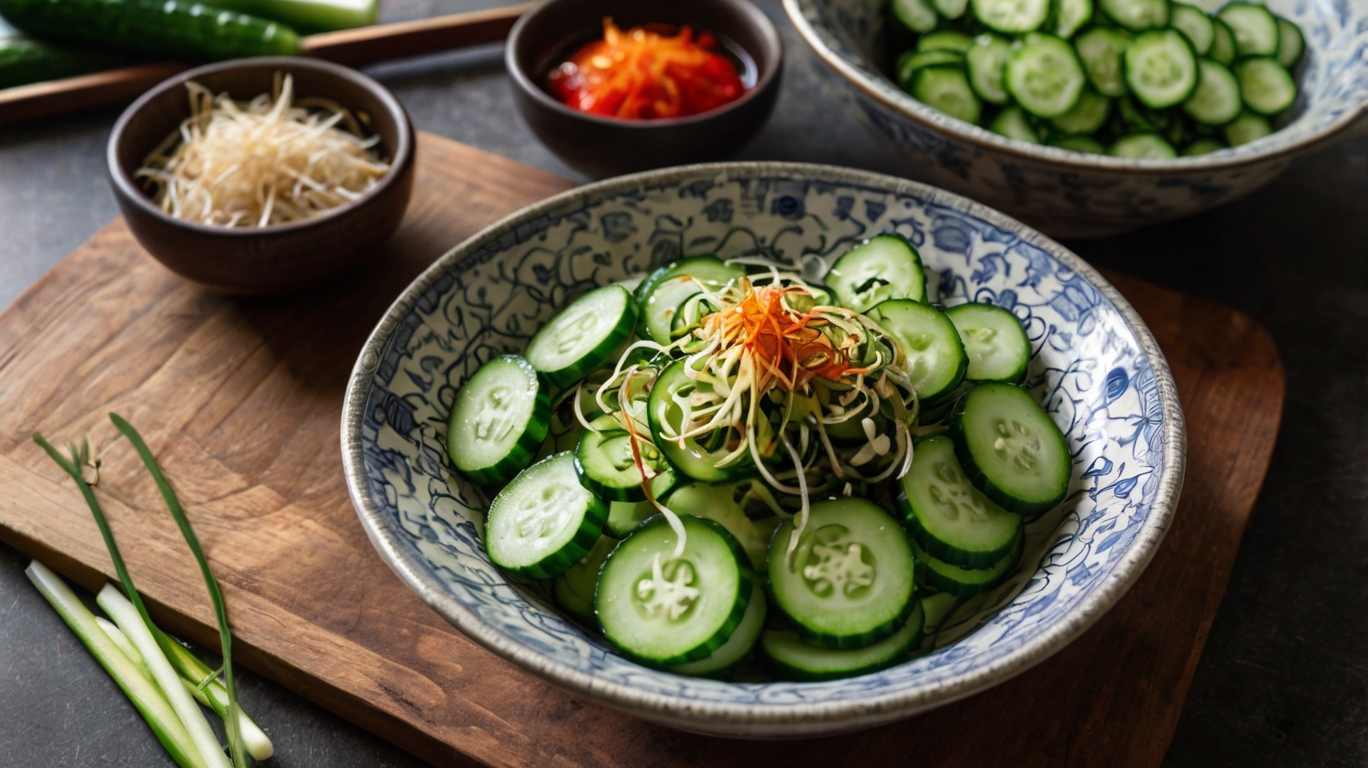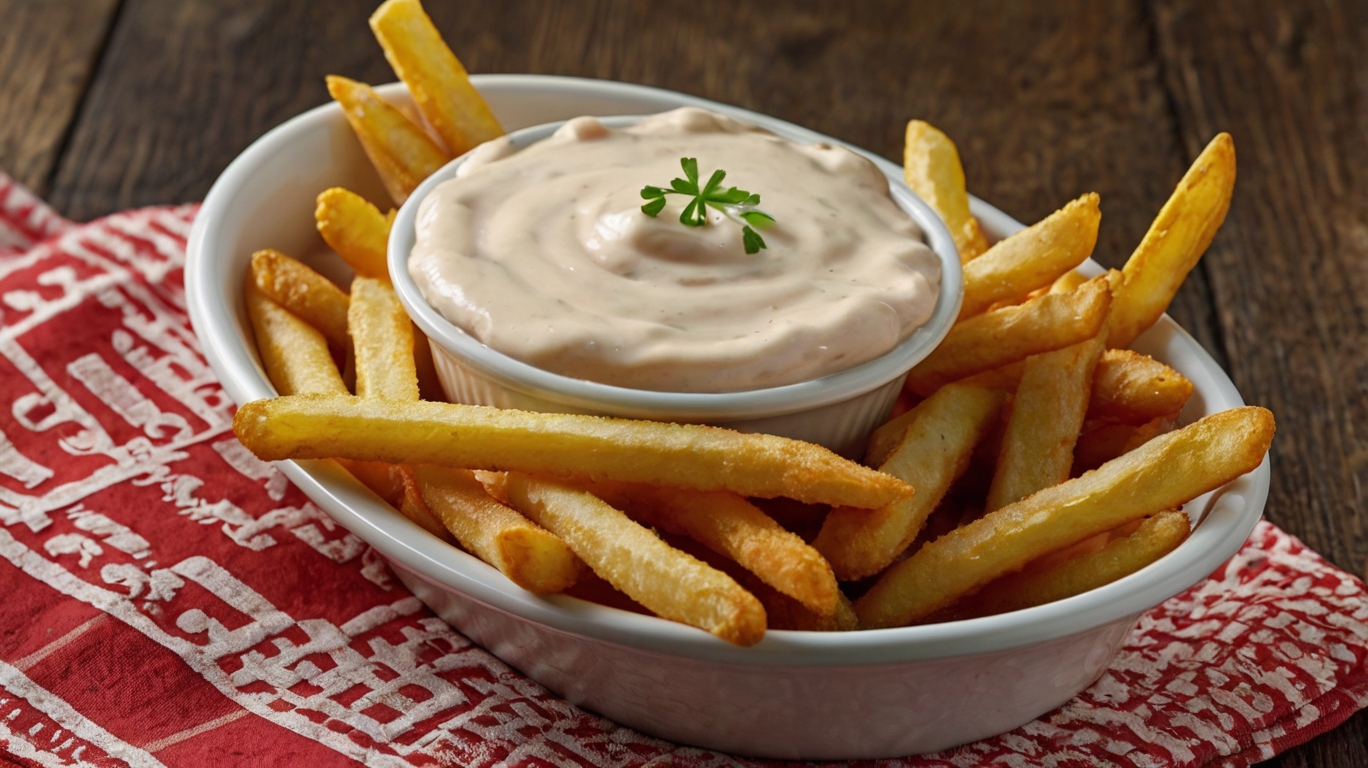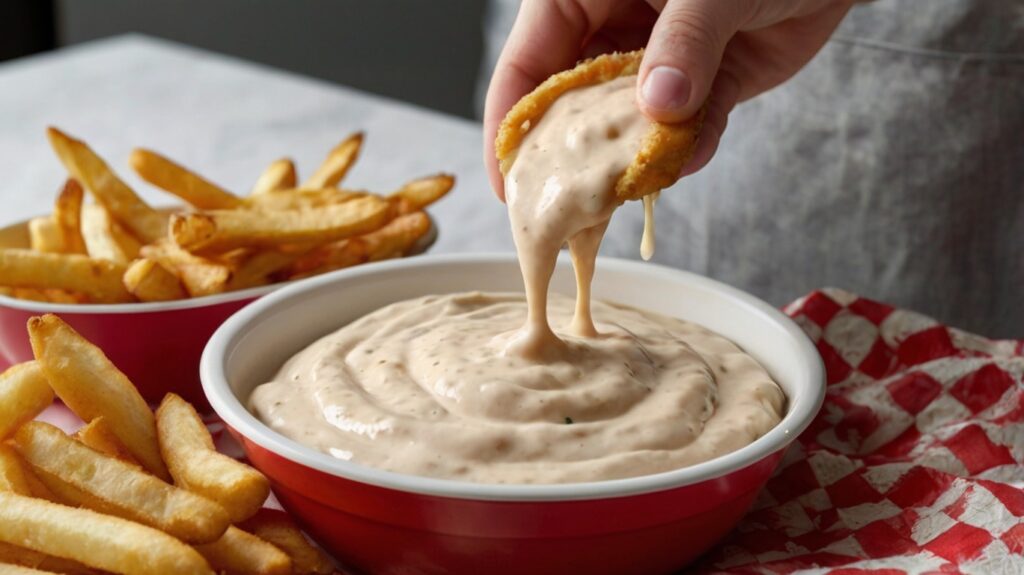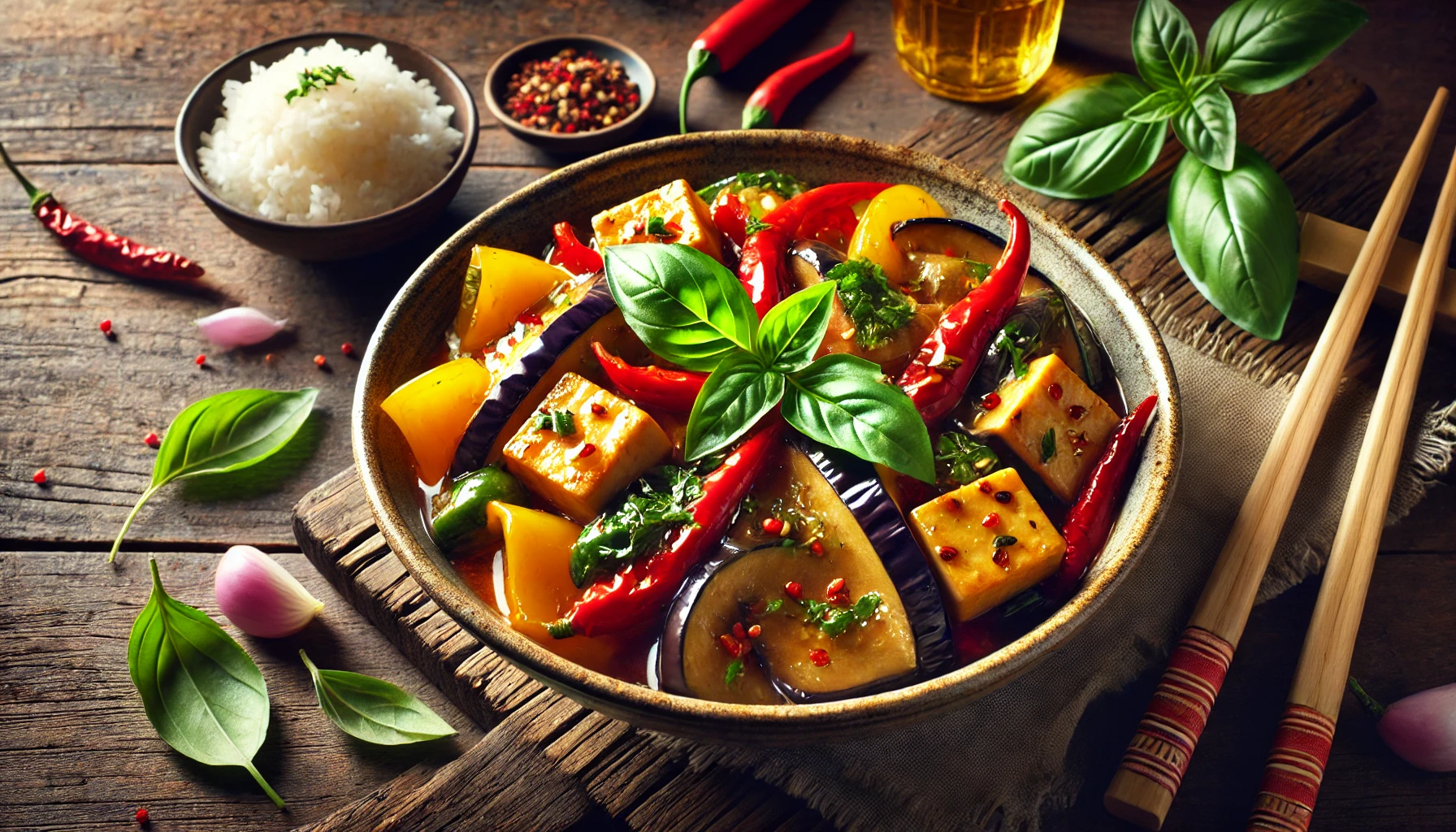World Cuisines
The Ultimate Pork Riblets Recipe

Introduction
Ready to explore the delicious world of pork riblets? This guide brings you everything you need to know to create a mouth-watering, tender pork riblets recipe. Whether you’re a grilling enthusiast, love oven-baked dishes, or prefer a slow-cooked approach, we’ll show you step-by-step how to make perfect pork riblets with seasoning, cooking methods, and serving tips to please everyone.
What Are Pork Riblets?
Pork riblets are a lesser-known cut of pork ribs that offer all the flavor and tenderness of regular ribs in a smaller, more manageable size. Unlike traditional pork ribs, which come from the full rib rack, riblets are cut from either the edges of these racks or the shorter, meatier portions near the backbone. They’re smaller, but their compact size means they cook quickly, making them ideal for busy weeknights or gatherings where finger foods are a hit.
Riblets are perfect for experimenting with seasonings, sauces, and cooking techniques, allowing you to find your favorite flavor profile. They’re usually more affordable than full-sized ribs, making them an economical and flavorful choice for family dinners or party platters.
Types of Pork Riblets and Choosing the Best Cut
Few pork riblets are available, depending on where they’re cut from. Let’s break down the most common types:
- St. Louis-Style Riblets: These are cut from spare ribs, typically trimmed to a rectangular shape with a hearty meat layer. They are juicy and ideal for grilling.
- Back Riblets: Cut from the baby back ribs, these riblets are a bit leaner but still deliver fantastic flavor. They’re often slightly smaller and cook quickly.
- Spare Riblets: These are trimmed from the sides of the spare ribs and offer an outstanding balance of fat and meat, giving them a rich flavor when cooked low and slow.
When selecting pork riblets, look for cuts with a balanced fat-to-meat ratio; a little marbling keeps the riblets moist and tender during cooking. Avoid riblets with excessive fat or gristle, which can make them chewy.
Ingredients for a Flavorful Pork Riblets Recipe
To create the perfect pork riblets, start with high-quality ingredients that complement the meat’s rich flavor. Here’s what you’ll need:
- Pork Riblets: About 1.5 to 2 pounds, ideally fresh or well-thawed if using frozen.
- Spice Rub: Combine smoked paprika, brown sugar, garlic powder, onion powder, ground cumin, salt, black pepper, and a pinch of cayenne for heat. This mix creates a balanced, smoky flavor.
- Sauce Options: To finish your riblets, choose a barbecue sauce, honey garlic glaze, or an Asian-inspired soy-ginger mix. These sauces add layers of flavor and can be adjusted for sweetness, spice, or tanginess.
- Optional Flavor Boosters: For added depth, consider adding lemon zest, fresh-herbs like rosemary or thyme, or a splash of apple-cider vinegar to balance the flavors.
The key to standout riblets is the spice rub. Adjust the spices to your taste, whether you like smoky, spicy, or sweet. A good rub and sauce combination makes all the difference, as the meat soaks up these flavors as it cooks.
How to Prepare Pork Riblets: Step-by-Step Guide
Follow these steps to ensure your riblets are packed with flavor and perfectly tender:
- Trim and Prep: Rinse the riblets under cold water, then pat them dry with paper-towels. This helps the rub stick and prevents steam, allowing it to brown nicely.
- Season Generously: Apply the spice rub evenly on all sides of the riblets, pressing the seasoning to ensure a good coating. Let the riblets sit with the rub for at least 30 minutes for maximum flavor, or refrigerate overnight.
- Marinate (Optional): If using a liquid marinade, combine ingredients in a bowl, place the riblets in a zip–lock bag, pour the marinade over them, and refrigerate for at least 1 hour, up to overnight for a deeper flavor-infusion.
Cooking Methods for Pork Riblets
There are several ways to cook riblets, depending on the tools and time you have. Here’s how to nail each method:

Grilling Pork Riblets
- Preheat the Grill: Heat to medium-high (around 350°F). Lightly oil the grill grates to prevent sticking.
- Cook the Riblets: Place riblets on the grill over indirect heat. Cover and cook for about 20-25 minutes, flipping halfway through. Baste with your sauce during the last 5 minutes for a caramelized glaze.
- Finish with Direct Heat: Move riblets over direct heat for a quick char, about 2-3 minutes, to create a crust.
Baking Pork Riblets in the Oven
- Preheat the Oven: Set to 300°F. For juicy, tender riblets, low and slow is best.
- Bake Covered: Place riblets on a foil-lined baking-sheet, cover with foil, and bake for two hours. This keeps them tender.
- Finish Uncovered: Uncover, baste with sauce, and increase the temperature to 425°F for a caramelized glaze, baking for 10 minutes.
Cooking Pork Riblets
- Layer and Season: Place riblets in the slow cooker, layer-by-layer, seasoning each layer with a bit of sauce.
- Cook Low and Slow: Set low for 6-8 hours or high for 3-4 hours. They’ll become tender and juicy with minimal effort.
- Broil for Crispness: Finish in a hot oven or under the broiler for a minute or two to get a slight char on the outside.
Instant Pot Pork Riblets
- Season and Layer: Season riblets. Please place them in the Instant Pot with 1/2 cup of water or broth.
- Cook Under Pressure: Set to high pressure for 25 minutes. Natural release for 10-minutes, then quick release.
- Crisp Up: Broil or grill to add a final touch of caramelization.
Tips for Perfectly Cooked Pork Riblets
- Avoid Overcooking: Keep an eye on cooking times. Riblets should reach an internal temperature of 145°F, maintaining juiciness without becoming dry.
- Basting for Extra Flavor: Apply a light sauce coat during the last few minutes of cooking. This will add a sticky, caramelized layer that complements the spice rub.
- Smoking Options: If grilling, add a few wood-chips to the coals or a smoker box to infuse a mild, smoky flavor.
Serving Suggestions and Side Dishes for Pork Riblets
Pair your pork riblets with classic sides or fresh salads to round out the meal:
- Traditional Pairings: Coleslaw, cornbread, mashed potatoes, or mac and cheese make excellent side dishes.
- Light & Fresh Options: A crisp salad, roasted Brussels sprouts, or grilled corn balance the rich, spiced riblets.
- Party Platter Ideas: For a finger-food setup, serve riblets with dipping sauces like spicy aioli, tangy BBQ, or even a creamy ranch for variety.
Storage, Freezing, and Reheating Pork Riblets
Storing Leftovers: Store leftover riblets in an airtight–container in the refrigerator for up to three days.
Freezing Cooked Riblets: To freeze, place riblets in freezer bags and store for up to three months. Defrost overnight in the fridge before reheating.
Reheating Tips: To maintain the texture and flavor, riblets should be reheated in a 300°F oven for about Ten minutes or in an air fryer for a crispy finish. Avoid microwaving.
Conclusion
Pork riblets are a flavorful, versatile cut perfect for every occasion, from casual dinners to BBQ parties. With simple steps, you can create delicious, tender riblets packed with flavor, whether you grill, bake, or slow cook. Experiment with seasonings and sauces, and enjoy your pork riblets with your favorite sides!
Frequently Asked Questions
Can I use this recipe for more giant ribs instead of riblets?
However, adjust cooking times accordingly since more giant ribs take longer.
What’s the difference between riblets and full ribs?
Riblets are more minor, often from the edges or trimmings of full ribs, making them ideal for quicker cooking and snacking.
How do I know when my riblets are done?
seek for an internal temperature of 145°F or check if they easily pull apart.
Can I cook pork riblets from frozen?
It’s best to thaw riblets first to ensure even cooking and proper seasoning.
World Cuisines
Korean Cucumber Salad (Oi Muchim) – A Quick, Refreshing Side Dish

If you’re looking for a quick, flavorful, and healthy side dish, Korean Cucumber Salad (Oi Muchim) is the answer. This vibrant salad is a staple in Korean cuisine, known for its refreshing crunch and spicy-tangy flavor. Best of all, it’s ready in just 10 minutes! Whether you’re serving it alongside Korean BBQ, rice bowls, or enjoying it as a light snack, this salad is sure to impress. Let’s dive into the recipe and tips to make it perfect every time.
What is Korean Cucumber Salad?
Oi Muchim is a simple yet delicious salad made with crisp cucumbers, garlic, green onions, and a flavorful seasoning of soy sauce, gochugaru (Korean red pepper flakes), and sesame oil. It’s light, refreshing, and pairs perfectly with grilled meats, rice dishes, or even as a snack. The combination of spicy, tangy, and slightly sweet flavors makes it a crowd-pleaser.
Ingredients
- 2 medium cucumbers (English or Persian)
- 2 cloves garlic, minced
- 2 green onions, thinly sliced
- 1 tbsp soy sauce (or tamari for gluten-free)
- 1 tbsp gochugaru (adjust to taste)
- 1 tbsp rice vinegar
- 1 tsp sesame oil
- 1 tsp sugar or honey
- 1 tsp toasted sesame seeds (optional)
Step-by-Step Instructions
- Prepare the Cucumbers: Wash and thinly slice the cucumbers. For extra crunch, leave the skin on. If using larger cucumbers, cut them in half lengthwise and scoop out the seeds to prevent excess water.
- Make the Dressing: In a small bowl, mix together the minced garlic, soy sauce, gochugaru, rice vinegar, sesame oil, and sugar. Adjust the spice level by adding more or less gochugaru.
- Combine and Toss: Place the sliced cucumbers in a large bowl. Add the dressing and sliced green onions. Toss everything together until the cucumbers are evenly coated.
- Serve and Enjoy: Transfer the salad to a serving dish and sprinkle with toasted sesame seeds for added flavor and texture. Serve immediately or chill in the fridge for 30 minutes for a cooler, refreshing taste.
Tips for the Perfect Korean Cucumber Salad
- Cucumber Choice: Use fresh, firm cucumbers like English or Persian varieties. They have fewer seeds and thinner skin, making them ideal for this salad.
- Spice Level: Adjust the gochugaru to suit your taste. If you’re new to Korean spices, start with ½ tbsp and add more as needed.
- Make Ahead: While this salad is best enjoyed fresh, you can store it in the fridge for up to 24 hours. Drain any excess liquid before serving.
- Add-Ins: Feel free to add shredded carrots, radishes, or even a splash of lime juice for extra flavor and color.
Why You’ll Love This Recipe
- Quick and Easy: Ready in just 10 minutes, it’s perfect for busy weeknights or last-minute meals.
- Healthy and Refreshing: Low in calories and packed with flavor, it’s a guilt-free side dish.
- Versatile: Pairs well with Korean BBQ, rice bowls, or as a light snack.
Conclusion
Korean Cucumber Salad (Oi Muchim) is a must-try for anyone who loves bold, refreshing flavors. With its simple ingredients and quick preparation, it’s the perfect side dish to brighten up any meal. Give this recipe a try, and let us know how it turns out in the comments below
World Cuisines
How to Make Freddy’s French Fry Sauce: The Ultimate Copycat Recipe

If you’ve ever dined at Freddy’s Frozen Custard & Steakburgers, you know their French fry sauce is legendary. That creamy, tangy, and slightly sweet dip is the perfect accompaniment to their crispy shoestring fries. But what if you could recreate that iconic Freddy’s French fry sauce recipe at home? Good news—you can! In this detailed guide, we’ll walk you through everything you need to know to make this delicious sauce in your own kitchen. Plus, we’ll share tips, tricks, and creative ways to use this versatile sauce.
What Makes Freddy’s French Fry Sauce So Special?
Freddy’s French fry sauce has a cult following for a reason. It’s a unique blend of creamy, tangy, and slightly sweet flavors that perfectly complements their golden, crispy fries. While the exact recipe is a closely guarded secret, we’ve cracked the code to create a homemade version that’s just as delicious. The key lies in the balance of ingredients—creamy mayonnaise, tangy ketchup, a hint of sweetness, and a secret ingredient that ties it all together.
Why Make Freddy’s French Fry Sauce at Home?
- Save Money: Dining out just for the sauce can add up. Making it at home is cost-effective and allows you to enjoy it whenever you want.
- Customize It: Adjust the ingredients to suit your taste preferences—add more spice, sweetness, or tanginess as you like.
- Impress Your Guests: Serve this sauce at your next gathering, and watch it disappear! It’s a guaranteed crowd-pleaser.
- Endless Uses: It’s not just for fries! Use it as a dip for burgers, chicken tenders, onion rings, or even veggies.

Freddy’s French Fry Sauce Recipe
Here’s the step-by-step guide to making Freddy’s French fry sauce at home. This recipe makes about 1 cup of sauce, but you can easily double or triple it for larger gatherings.
Ingredients:
- ½ cup mayonnaise (use high-quality mayo for the best flavor)
- 2 tablespoons ketchup
- 1 tablespoon distilled white vinegar
- 1 teaspoon sugar
- 1 teaspoon paprika
- ½ teaspoon garlic powder
- ½ teaspoon onion powder
- ¼ teaspoon salt
- ¼ teaspoon black pepper
- 2-3 tablespoons pickle juice (this is the secret ingredient!)
Instructions:
- Combine the Base Ingredients: In a medium-sized bowl, add the mayonnaise, ketchup, and white vinegar. Mix until smooth and well combined.
- Add the Spices: Stir in the sugar, paprika, garlic powder, onion powder, salt, and black pepper. Mix well to ensure the spices are evenly distributed.
- Incorporate the Secret Ingredient: Add the pickle juice, one tablespoon at a time, until you reach your desired consistency and flavor. The pickle juice adds a tangy kick that mimics the original Freddy’s sauce.
- Chill and Serve: Cover the bowl and refrigerate the sauce for at least 30 minutes to allow the flavors to meld. Serve with your favorite fries, burgers, or snacks.
Tips for Perfect Freddy’s French Fry Sauce
- Use High-Quality Ingredients: Since this sauce has a short ingredient list, the quality of each component matters. Opt for full-fat mayonnaise and fresh spices for the best flavor.
- Adjust the Sweetness: If you prefer a sweeter sauce, add an extra teaspoon of sugar. For a tangier flavor, increase the amount of pickle juice or vinegar.
- Experiment with Spices: Feel free to tweak the spice levels to suit your taste. A dash of cayenne pepper can add a subtle heat, while smoked paprika can give it a deeper, smoky flavor.
- Make It Ahead of Time: This sauce tastes even better the next day, so consider making it a day in advance to allow the flavors to fully develop.
- Storage Tips: Store the sauce in an airtight container in the refrigerator for up to 1 week. Stir well before serving if the ingredients have separated.
How to Serve Freddy’s French Fry Sauce
While this sauce is a natural pairing for fries, its versatility makes it a great addition to many dishes. Here are some creative ways to use it:
1. Classic French Fry Dip
Pair it with crispy shoestring fries, steak fries, or sweet potato fries for the ultimate dipping experience.
2. Burger Spread
Slather it on your homemade burgers for an extra burst of flavor. It pairs perfectly with beef, chicken, or veggie burgers.
3. Chicken Dip
Use it as a dipping sauce for chicken tenders, nuggets, or even fried chicken sandwiches.
4. Veggie Dip
Pair it with fresh veggies like carrots, celery, bell peppers, or cucumber slices for a healthier snack option.
5. Sandwich Sauce
Add it to sandwiches or wraps for a creamy, tangy twist. It works especially well with turkey, ham, or grilled cheese sandwiches.
6. Onion Ring Dip
Elevate your onion rings by serving them with this flavorful sauce.
7. Breakfast Companion
Try it as a dip for hash browns or breakfast potatoes for a delicious morning treat.
Frequently Asked Questions (FAQs)
1. Can I make this sauce healthier?
Yes! You can use light mayonnaise or Greek yogurt as a substitute for regular mayo. However, keep in mind that this may slightly alter the flavor and texture.
2. How long does Freddy’s French fry sauce last?
When stored in an airtight container in the refrigerator, the sauce will stay fresh for up to 1 week.
3. Can I freeze the sauce?
Freezing is not recommended, as mayonnaise-based sauces tend to separate and lose their creamy texture when thawed.
4. What if I don’t have pickle juice?
If you don’t have pickle juice, you can substitute it with a combination of white vinegar and a pinch of salt. However, pickle juice adds a unique tanginess that’s hard to replicate.
5. Can I make this sauce spicy?
Absolutely! Add a dash of hot sauce, cayenne pepper, or chili powder to give it a spicy kick.
The History of Freddy’s Frozen Custard & Steakburgers
Freddy’s Frozen Custard & Steakburgers was founded in 2002 in Wichita, Kansas, by brothers Bill and Randy Simon, along with their business partner, Scott Redler. The restaurant was named after their father, Freddy Simon, who inspired their commitment to quality and hospitality. Freddy’s is known for its cooked-to-order steakburgers, crispy shoestring fries, and, of course, its famous French fry sauce. The sauce has become a signature item, beloved by customers across the country.
Why You’ll Love This Recipe
This Freddy’s French fry sauce recipe is quick, easy, and requires no special cooking skills. With just a few pantry staples, you can recreate the magic of Freddy’s signature sauce in your own kitchen. Plus, it’s a fun way to bring a taste of your favorite restaurant home. Whether you’re hosting a party, enjoying a family dinner, or simply craving a delicious dip, this sauce is sure to impress.
Final Thoughts
Freddy’s French fry sauce is more than just a condiment—it’s a flavor experience that elevates any meal. With this homemade recipe, you can enjoy that iconic taste anytime, anywhere. Whether you’re dipping fries, spreading it on a burger, or pairing it with veggies, this sauce is a versatile and delicious addition to your culinary repertoire.
So, what are you waiting for? Grab your ingredients and whip up a batch of Freddy’s French fry sauce today. Your taste buds will thank you!
fallow my page also CulinizCooking
World Cuisines
Thai Basil Eggplant Recipe: A Flavorful Vegan and Gluten-Free Delight

Thai cuisine has captivated food enthusiasts worldwide with its dynamic interplay of bold flavors and wholesome ingredients. The Thai Basil Eggplant recipe is no exception, offering a delightful blend of sweet, savory, and slightly spicy flavors. Whether you’re new to Thai cooking or a seasoned enthusiast, this dish is a must-try for its simplicity and vibrant taste. Here’s a comprehensive guide to preparing this delicious and healthy dish.
Why You’ll Love This Recipe
- Healthy and Nutritious: Packed with vegetables, tofu, and aromatic basil, this dish is a powerhouse of nutrients.
- Vegan and Gluten-Free: With simple ingredient swaps, it caters to diverse dietary preferences.
- Easy to Make: A quick preparation process makes it ideal for busy weeknights or lazy weekends.
Ingredients
For the Main Dish:
- 1 large Italian eggplant or 2 medium Japanese/Chinese eggplants
- 1 green bell pepper, thinly sliced
- 1 red bell pepper, thinly sliced
- 1 yellow bell pepper, thinly sliced
- 1 white onion, halved and thinly sliced
- 14 oz firm tofu, cut into cubes
- 2 cloves garlic, minced
- 4 tbsp cooking oil (coconut, grapeseed, or avocado oil)
- Fresh basil leaves
For the Sauce:
- 4.5 tbsp hoisin sauce (e.g., Koon Chun Hoisin Sauce or gluten-free Sun-Luck Hoisin Sauce)
- 1/2 cup tamari or soy sauce
- 1/4 cup water
- 2 tsp chili sauce (e.g., Huy Fong Chili Sauce)
- 2 tsp cornstarch
Step-by-Step Instructions
Preparing the Eggplant:
- Slice the eggplant: If using Italian eggplant, cut it into slabs, then into diagonal pieces. For Japanese/Chinese eggplants, slice lengthwise and cut diagonally.
- Heat 2-3 tablespoons of oil in a large non-stick pan over medium heat.
- Add the eggplant pieces, toss to coat with oil, and cook with a small amount of water over low-medium heat. Cover and stir occasionally until tender but firm. Set aside.
Preparing the Tofu and Vegetables:
- Press the tofu to remove excess moisture, then cut into cubes.
- Pan-fry tofu on medium-high heat until golden brown on most sides. Set aside.
- In the same pan, sauté onions and bell peppers with 1 tbsp oil until crisp-tender. Add minced garlic midway and stir until fragrant.
- Combine cooked tofu, vegetables, and eggplant in one pan.
Making the Sauce:
- Whisk together all sauce ingredients until cornstarch dissolves.
- Heat the combined eggplant, tofu, and vegetables over low-medium heat.
- Pour the sauce into the pan, stirring frequently until it thickens and coats the ingredients evenly.
- Turn off the heat, add freshly chopped basil, and mix well.
Serving Suggestions
Serve the Thai Basil Eggplant hot with:
- Steamed jasmine rice
- Brown rice
- Quinoa for a gluten-free option
Tips for Success
- Choosing the Right Eggplant: Japanese and Chinese eggplants are less bitter and ideal for this dish.
- Adjusting Spice Levels: Add more chili sauce or fresh chilies for extra heat.
- Time-Saving Tips: Cook the tofu and vegetables simultaneously in separate pans while preparing the eggplant.
- Storage: Refrigerate leftovers in an airtight container for up to 3 days. Reheat gently on the stovetop.
Nutritional Information (Per Serving)
- Calories: 185 kcal
- Carbohydrates: 14g
- Protein: 7g
- Fat: 11g
- Sodium: 1382mg
- Fiber: 1g
- Vitamin A: 735 IU
- Vitamin C: 79.4mg
Conclusion
Thai Basil Eggplant is a versatile and delectable dish that embodies the essence of Thai cuisine. With its rich flavors and straightforward preparation, it’s perfect for anyone looking to enjoy a restaurant-quality meal at home. Whether you’re cooking for yourself or hosting a dinner party, this recipe will undoubtedly impress.
Frequently Asked Questions (FAQ)
1. Can I use a different type of eggplant?
Yes, Italian eggplants work well, but Japanese and Chinese varieties are preferred for their tender texture and mild flavor.
2. What can I use instead of tofu?
You can substitute tofu with tempeh, seitan, or even chicken for a non-vegan option.
3. Is this dish spicy?
The dish has a mild spice level. Adjust the chili sauce to suit your preference.
4. Can I prepare this dish in advance?
Yes, you can prepare the components separately and combine them with the sauce just before serving.
5. What can I pair this dish with?
Pair it with other Thai-inspired dishes like Sweet Chili Lime Tofu or a fresh cucumber salad for a complete meal.
Embrace the flavors of Thailand with this easy, healthy, and satisfying recipe. Happy cooking!
fallow my page / Pinterest
-

 Sustainable Cooking6 months ago
Sustainable Cooking6 months agoHow to Make Vegetable Scrap Broth: A Zero-Waste Recipe
-

 World Cuisines5 months ago
World Cuisines5 months agoCream of Wheat Recipe: A Delicious Breakfast
-

 Sustainable Cooking5 months ago
Sustainable Cooking5 months agoHomemade Pumpkin Spice Creamer Recipe
-

 World Cuisines6 months ago
World Cuisines6 months agoHow to Make authentic Italian Pasta Recipe
-

 Sustainable Cooking6 months ago
Sustainable Cooking6 months agoHow to Make Delicious Chicken Salad from Leftover Chicken
-

 World Cuisines5 months ago
World Cuisines5 months agoHealthy Halloween Salad Recipes
-

 World Cuisines5 months ago
World Cuisines5 months agoThe Ultimate Guide to Blackened Grilled Lingcod Recipes
-

 Sustainable Cooking5 months ago
Sustainable Cooking5 months agoRoll sushi -How to Make Alaska Roll Sushi




Pingback: Vietnam Pho Saigon Grilled Steak with Egg Roll 2024